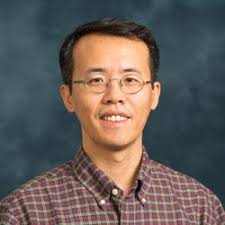UNDERSTANDING THE DAY-TO-DAY TRAFFIC EVOLUTION PROCESS AFTER THE I-35W BRIDGE COLLAPSE IN MINNESOTA

University of Minnesota
Understanding the traffic evolution process after an unexpected network disruption is of great significance to traffic engineers who are responsible for traffic restoration. In this talk, we will discuss our recent findings on the day-to-day traffic equilibration process following the unexpected collapse and eventual reopening of the I-35W Bridge over the Mississippi River in Minneapolis. Following the I-35W Bridge collapse, drivers were observed to drastically avoid areas near the disruption site until the perceived congestion in that area gradually diminished. After the reopening of the disrupted link, despite a complete restoration of network topology, it was found that total demand restoration on that link did not occur, implying that a different traffic equilibrium was reached. Due to the rare occurrence of the network disruption event, such behaviour has not been reported in the literature and none of the existing day-to-day traffic assignment models are capable of explaining the empirical evidences. To fill in this gap, we have developed a nonlinear dynamic system that is capable of describing the transient states of a disrupted network, answering questions related to the traffic evolution trajectory from a disequilibrium (due to a network disruption) toward an equilibrium. Our models are calibrated and validated using the data collected from the Twin Cities network after the bridge collapse and reopening. To the best of our knowledge, this is the first time that day-to-day traffic equilibration models have been constructed and compared against real world observations.
Dr. Henry Liu is currently an associate professor of Civil Engineering at the University of Minnesota - Twin Cities. Before joining the University of Minnesota, he was an assistant professor at Utah State University and a post-doctoral researcher at the California PATH Program of UC-Berkeley. He received his Ph.D. degree in Civil and Environmental Engineering from the University of Wisconsin at Madison in 2000 and his B.E. degree in Automotive Engineering from Tsinghua University (China) in 1993. Dr. Liu’s research interests are in the area of traffic network monitoring, modeling, and control, which includes traffic flow modeling and simulation, traffic signal operations, and equilibrium traffic assignment. On these topics, he has published more than 50 articles in peer-reviewed journals. Dr. Liu is currently the overview paper editor of Transportation Research Part C and an associate editor of Network and Spatial Economics. He is also on the editorial board of Transportation Research Part B, Journal of Intelligent Transportation Systems, and IET Intelligent Transportation Systems Journal.